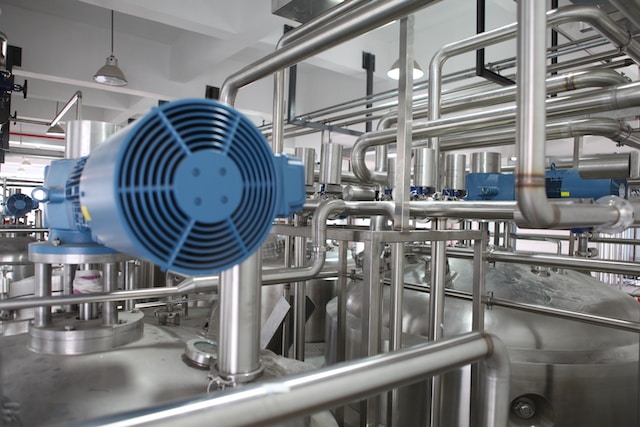Heat exchangers stand as indispensable components within industrial processes, facilitating the seamless transfer of heat between fluids. However, these pivotal mechanisms are prone to fouling—a gradual accumulation of deposits that can impede performance and jeopardise their longevity.
It’s imperative to comprehend the importance of proper cleaning practices to reinstate heat exchanger efficiency and prolong their operational life.
What is Heat Exchanger Cleaning?
At its core, heat exchanger cleaning revolves around the meticulous removal of accumulated deposits from the heat transfer surfaces. These deposits stem from diverse sources, including the nature of processed fluids, operational conditions, and environmental influences. If left unaddressed, fouling can precipitate diminished heat transfer efficiency, escalated pressure differentials, and potential equipment malfunctions.
What are the Signs of Fouling?
Identifying possible signs of fouling is crucial for preserving operational integrity, the signs include:
Reduced Heat Transfer Efficiency: Observable decline in the ability to transfer heat signifies the presence of deposits hindering the process.
Elevated Pressure Drops: Constricted fluid pathways due to fouling can result in increased pressure differentials across the exchanger.
Heightened Energy Consumption: Counterbalancing reduced heat transfer efficiency requires escalated energy inputs.
Diminished Fluid Flow Rates: Deposit accumulation obstructs fluid flow, directly impacting process efficiency.
Unusual Audible and Structural Cues: Vibrations or atypical noises may signal fouling-related structural implications.
What Methods of Heat Exchanger Cleaning are there?
Several methods are utilised to eradicate deposits and restore the efficiency of heat exchangers. Firstly, Cleaning-in-Place (CIP) stands as a non-intrusive technique that utilises chemical solutions and mechanical agitation to clean the exchanger’s surfaces without requiring disassembly.
Secondly, backflushing involves reversing the fluid flow inside the exchanger, effectively dislodging and expelling accumulated deposits.
Lastly, mechanical cleaning comes into play for obstinate deposits or severe fouling, employing mechanisms like scrapers, brushes, or ultrasonic methods to remove the deposits effectively.
These methods play a pivotal role in reinstating the optimal functioning of heat exchangers by addressing the issue of fouling.
How do you Prevent Fouling?
Regulating the performance of heat exchangers necessitates the implementation of various techniques designed to eliminate deposits and restore their efficiency. One such method is Cleaning-in-Place (CIP), a non-disruptive approach that integrates chemical solutions and mechanical agitation. This technique allows for the cleansing of heat exchanger surfaces without necessitating their dismantling, facilitating efficient removal of deposits within the system.
Additionally, the backflushing method stands as another viable strategy for mitigating fouling. By altering the fluid flow direction within the exchanger, this approach dislodges and expels deposits that may have accumulated. This reversal of fluid flow effectively rids the exchanger of unwanted deposits, thereby contributing to the restoration of its operational efficiency.
For more severe cases of fouling or stubborn deposits, mechanical cleaning techniques offer a solution. This method involves the use of specialised tools such as scrapers, brushes, or ultrasonic equipment to target and eliminate deposits that have firmly adhered to heat exchanger surfaces.
While more intrusive, this approach is highly effective in addressing extensive fouling, ensuring the restoration of optimal functionality within the heat exchanger system.
Each of these methods plays a crucial role in the maintenance and revitalisation of heat exchangers, ensuring their continued efficiency and functionality.
